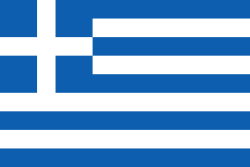S776 Bizflame Rain Hi-Vis Anti-static FR Bodywarmer
A great addition to the Bizflame Rain Range, this multi- functional bodywarmer offers all the safety properties of the other garments in this range including a concealed mobile phone pocket under the stormflap for easy access and a quilted flame resistant lining for maximum protection and comfort.
Features:
- FR cotton lined for added warmth and comfort
- Padded collar for added comfort
- Internal chest pocket
- Lower front pockets with hook and loop closure
- Storm flap front to protect against the elements
- External standards label for quick identification of protection levels
- Anti-static
- Premium sew on flame resistant reflective tape
- Breathable fabric to draw moisture away from the body keeping the wearer cool, dry and comfortable
- Taped seams to provide additional protection
- 4 pockets for ample storage
- Two-way zip for quick and easy access
- Concealed phone pocket
- Radio loops for easy clipping of a radio
- CE certified
- CE-CAT III
Fabric Information:
Shell Fabric: Bizflame™ Rain: 98% Polyester, 2% Antistatic Carbon Fibre, Breathable, PU Coated, 250g
Lining Fabric: 100% Cotton Flame Resistant Lining, 170g
Filling Fabric: 100% Modacrylic Flame Resistant, 150g
Standards:
EN ISO 14116 Index 3
EN 1149-5
EN 13034 Type PB [6]
EN ISO 20471 Class 2
RIS 3279 TOM Issue 2 (Orange Only)

PORTWEST
For over 117 years we’ve possessed an unrelenting ambition to produce the world’s most trusted and requested protective wear. Through the decades, we have continuously proven our dedication to quality, producing world beating safety garments, foot protection, hand protection and PPE, while pushing the boundaries in protection technologies. Technologies that make the workplace a safer place.
EN ISO 20471 Hi-Vis Class 2
EN ISO 20471 is divided into three classes, the requirement for the area consisting of reflectors and fluorescent materials – that determines which class you need to choose. Minimum areas of visible material in m². Class 3: Reflective Tape = 0.20m², Fluorescent material = 0.80m². Class 2: Reflective Tape = 0.13m², Fluorescent material = 0.50m². Class 1: Reflective Tape = 0.10m², Fluorescent material = 0.14m². The highest class is class 3. There are two ways to attain class 3. Either choose an EN ISO 20471 product that is rated class 3 on its own (e.g. a jacket) or choose two products that together are class 3 certified.Details
EN ISO 14116 Limited Flame Spread
Protective clothing complying with this standard is intended to protect workers against occasional and brief contact with small igniting flames in circumstances where there is no significant flame hazard and without the presence of another type of heat. Three different categories for flame spread, Index 1, 2 and 3. Index 1: garments should not be worn next to the skin. They must be worn over Index 2 or 3 garments. Index 2 or 3 garments can be worn next to the skin.Details
IEC 61482-2 Protective Clothing Thermal Arc Hazards
Standard for protective clothing against the thermal effects of an electric arc event. Two different test methods: Open Arc IEC 61482-1-1 and Box test EN 61482-1-2. OPEN ARC - IEC 61842-1-1 (USA). The first result, ELIM - The maximum incident energy (cal/cm²) the garment can withstand before the wearer would have a 0% probability of a second degree burn. The second result is either: ATPV (Arc Thermal Performance Value, cal/cm²) The maximum incident energy the garment can withstand before the wearer would have 50% probability of a second degree burn or EBT (Energy Break Open Threshold, cal/cm²) The incident energy at which a 50% probability of a breakopen occurs resulting in a second degree burn. Since ELIM indicates an energy value at 0% probability of a second degree burn and ATPV/EBT at 50% probability, the ELIM value is usually lower than ATPV/EBT. Large differences between the ELIM and ATPV/EBT results highlight the importance of wearing several layers of garments to ensure you are properly protected. EN 61482-1-2 (Europe) is evaluated in two classes in the same test: APC1 protects against electric arc of 4kA (arc energy 168 kJ), APC2 protects against electric arc of 7kA (arc energy 320 kJ). Unlike the American standard, there is not a result scale in this garment tests, only two levels where the garment either passes or fails. A garment with one layer of Flame Retardant fabric usually passes APC 1 - even thin shirt fabrics. To pass APC 2, a system with two or three fabric layers or a lined garment is normally required. This makes it more difficult to adapt the protection to the risk, without compromising on comfort. As APC 1 is a relatively low level of protection, we always recommend a basic protection of at least 8 cal/cm².Details
EN 1149 Anti-Static (ATEX)
This standard specifies PPE Clothing used in explosive environments (i.e. ATEX) where there is a risk that the garments could create sparks (source of ignition), which in turn could ignite explosive materials. Anti-Static garments marked EN 1149-5 are intended to be worn in Atex zones 1, 2, 20, 21 and 22. In oxygen enriched atmospheres or in zone 0, the Anti-Static garments should not be used without first being approved by a qualified Safety Engineer, as wear and tear can affect the protection of the garment and it is crucial that they are worn the correct way in these environments.Details
EN 13034 Liquid Chemicals
Standard for protection of a potential exposure to a light spray, liquid aerosols or low pressure, low volume splashes when complete liquid permeation barrier (at a molecular level) is not required. The following chemical groups/chemicals can be tested: H2SO4 30% (Sulphuric acid), NaOH 10% (Sodium hydroxide also called lye and caustic soda), O-xylene, Butanol. The result is given in scale 1-3 where the maximum value is 3. To pass the test and be able to use the EN 13034 symbol in the CE-marking, at least one chemical shall obtain level 3 for liquid repellency and at least one chemical shall obtain level 2 for resistance to penetration.Details
Treated FR Garments
FR treated fabrics are based on cotton, blended with polyester, para-aramid or polyamide. These fabrics get their FR property from the chemical treatment that is applied to the fabric. This chemical treatment is executed in such a way that it fully penetrates the fiber and as such is bonded throughout the entire fabric. As a result of this treatment, the fabric becomes flame retardant and keeps this property during the lifetime of the garment. PROS: very good protection against molten metal, good protection against heat and ARC, relatively cheap, good value for money in dirty environments where expected lifespan is not very long. CONS: wash fastness is typically not very good (pale look after several washes), to achieve similar FR properties as inherent FR the fabrics typically become a bit heavier and therefore tend to be a bit less comfortable.Details
Share this product:
| Color | ORR Orange or YER Yellow |
| Garment Size | S - Small or M - Medium or L - Large or XL - XLarge or XXL - XXLarge or XXXL - 3XLARGE |
Once the user has seen at least one product this snippet will be visible.





